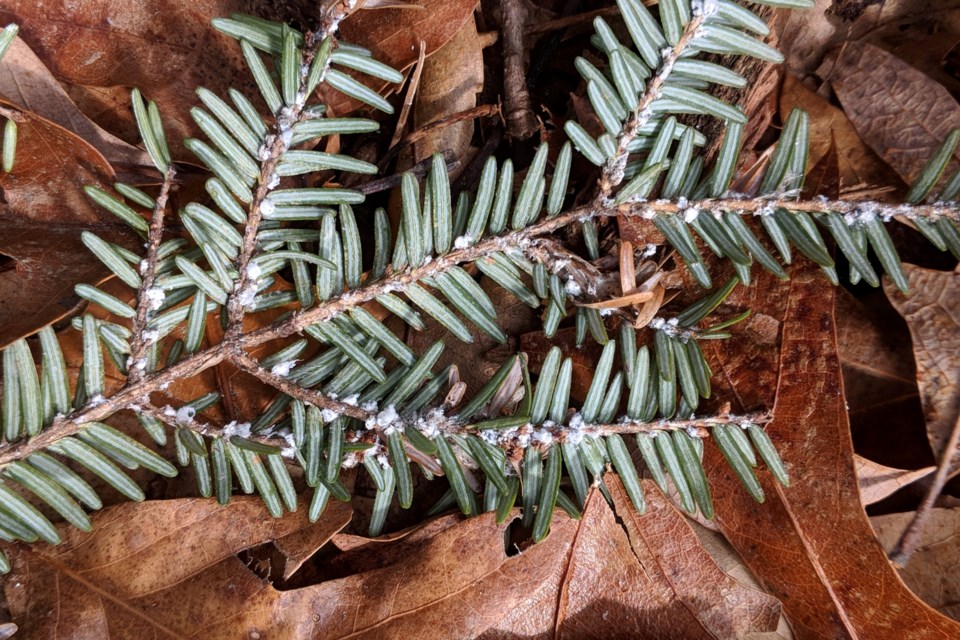NEWS RELEASE
INVASIVE SPECIES CENTRE
**********************
An invasive forest insect known as the Hemlock Woolly Adelgid (Adelges tsugae, HWA) has been confirmed by the Canadian Food Inspection Agency (CFIA) in the City of Port Colborne, Niagara Region.
HWA is a species native to Eastern Asia that targets hemlock (Tsuga spp.) and spruce (Picea spp.) trees. First discovered in Virginia in the 1950s, it has since spread across North America and is relatively new in Ontario. This insect is problematic to our native Eastern hemlock trees (Tsuga canadensis), relying on them as their host. The HWA extracts and feeds on the sap from the base of the tree needles, causing branch dieback and eventually tree mortality. It can be spread by wind, animals, and human movement of nursery stock, logs, and other wood products.
Left unmanaged, this pest can severely disrupt our forest ecosystems. Eastern hemlocks are important for wildlife and maintain the health of forest rivers and streams. Outdoor recreation in parks and urban green spaces may also be negatively impacted. Although they may not contribute a significant economic value to the forestry industry, hemlocks are often sold as nursery stock, posing a possible threat to the horticultural industry.
What community members can do
Landowners and members of the agricultural and horticultural industries can check for signs and symptoms including:
- white "woolly" sacs resembling tiny cotton swab ends at the base of hemlock needles on young twigs; most obvious in the spring
- premature bud and shoot dieback
- premature needle loss
- thinner, greyish-green crown (healthy crowns are a shiny, dark green colour)
- dieback of twigs and branches
- discoloured foliage
- death within 4 to 15 years
If engaging in outdoor recreation, please check and remove any plant material and debris from your clothes, equipment, and/or pets, especially when moving between natural areas. Stay on designated trails to reduce the risk of encountering and disturbing infested trees. It is important to remember to not move firewood. Doing so significantly increases the risk of spreading invasive forest pests and pathogens. Placing bird feeders near hemlock trees should also be avoided, as birds can spread HWA to new locations.
Familiarize yourself with signs of other invasive pests including branch dieback, evidence of feeding activity, presence of egg masses, and sap running from the tree. These can all be signs of an invasive forest pest or pathogen.
Members of the greenhouse and nursery sector are encouraged to take advantage of our educational materials, including species profiles, factsheets, videos, management resources, and online training courses. If growing plants, trees, and shrubs, please monitor for the presence of forest pests, especially HWA.
If an infestation is suspected, please report it to the Canadian Food Inspection Agency (CFIA). A good report includes an accurate location of the suspect tree and photos of the symptoms. The CFIA will respond to reports of the HWA and take appropriate action, which may include site surveying and sample collection.
*************************



